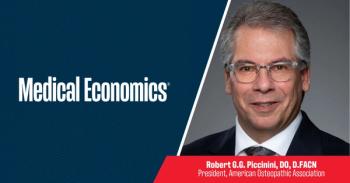
The loss of Medicaid and ACA health insurance will lead to fewer patients for physicians
The One Big Beautiful Bill Act, now the law of the land, will bring change to U.S. health care.
President Donald Trump’s signature legislative package — the One Big Beautiful Bill Act — has been passed and signed into law, and many in the insurance industry are bracing for potential ramifications in several areas the law now touches.
Areas that might feel an impact include reduced
At its heart, the One Big Beautiful Bill Act is a sweeping tax and spending bill that cuts trillions in taxes over the next 10 years. To pay for that, Congress has made huge cuts and changes to many health care programs, not the least of which are Medicaid and the Affordable Care Act.
The Robert Wood Johnson Foundation
Because many of the direct changes were to Medicaid, the biggest impact is expected to be felt most by the 40 states that have expanded Medicaid, but the states that have not expanded Medicaid also stand to lose substantial federal funding.
Fewer Medicaid recipients could translate to reduced patient volumes, particularly impacting facilities that rely heavily on Medicaid, such as skilled nursing facilities and, to some extent, rural hospitals.
That said, the law also contains a provision that might make it a bit of a mixed bag for physicians who accept Medicaid. That’s because the law does come with a 2.5%
Advocates for the law point out that the changes don’t directly take away any Medicaid coverage from the more than 71 million U.S. citizens who are
One of the biggest changes is the Medicaid work requirements, which mandate that most able-bodied adults log at least 80 hours a month of work, school, or volunteer work to remain in the program. That requirement is waived for several classes of people, including parents of young children, elderly individuals, and many disabled people.
The place where most critics weigh in is where it comes to certifying that work. The new law requires recipients to file paperwork proving their eligibility at least twice each year — a requirement many critics liken to asking Medicaid recipients to file their taxes twice annually.
Whether because people aren’t expected to satisfy the work requirement or because they might fall prey to cumbersome paperwork, the Congressional Budget Office
With fewer people enrolled in Medicaid, programs that rely on a large percentage of Medicaid patients stand to suffer, especially rural hospitals and
The law’s insurance implications don’t stop with Medicaid, though. There are some major changes that will ripple through the Affordable Care Act as well. More than 24 million people have an Affordable Care Act Marketplace Plan at last
While it isn’t strictly a change, one major aspect of the law is that it will allow the enhanced premium
The law also tweaks who is eligible for the Marketplace Plan subsidies that are remaining in place.
It is also changing the process for
Open enrollment will be shorter, with one month cut off the end of the selection period.
According to health care nonprofit
While it is too soon to see how the One Big Beautiful Bill Act ultimately impacts the health care industry, one sure thing is that fewer insured people means
History has also shown that when fewer people have primary insurance, they instead opt for treatment in emergency facilities, leading to more uncompensated care. The Robert Wood Johnson Foundation estimates that the law will likely result in over $200 million more in uncompensated care over the next decade that will have to be absorbed by the rest of the medical community.
Michael Giusti, MBA, is an analyst at
Newsletter
Stay informed and empowered with Medical Economics enewsletter, delivering expert insights, financial strategies, practice management tips and technology trends — tailored for today’s physicians.








